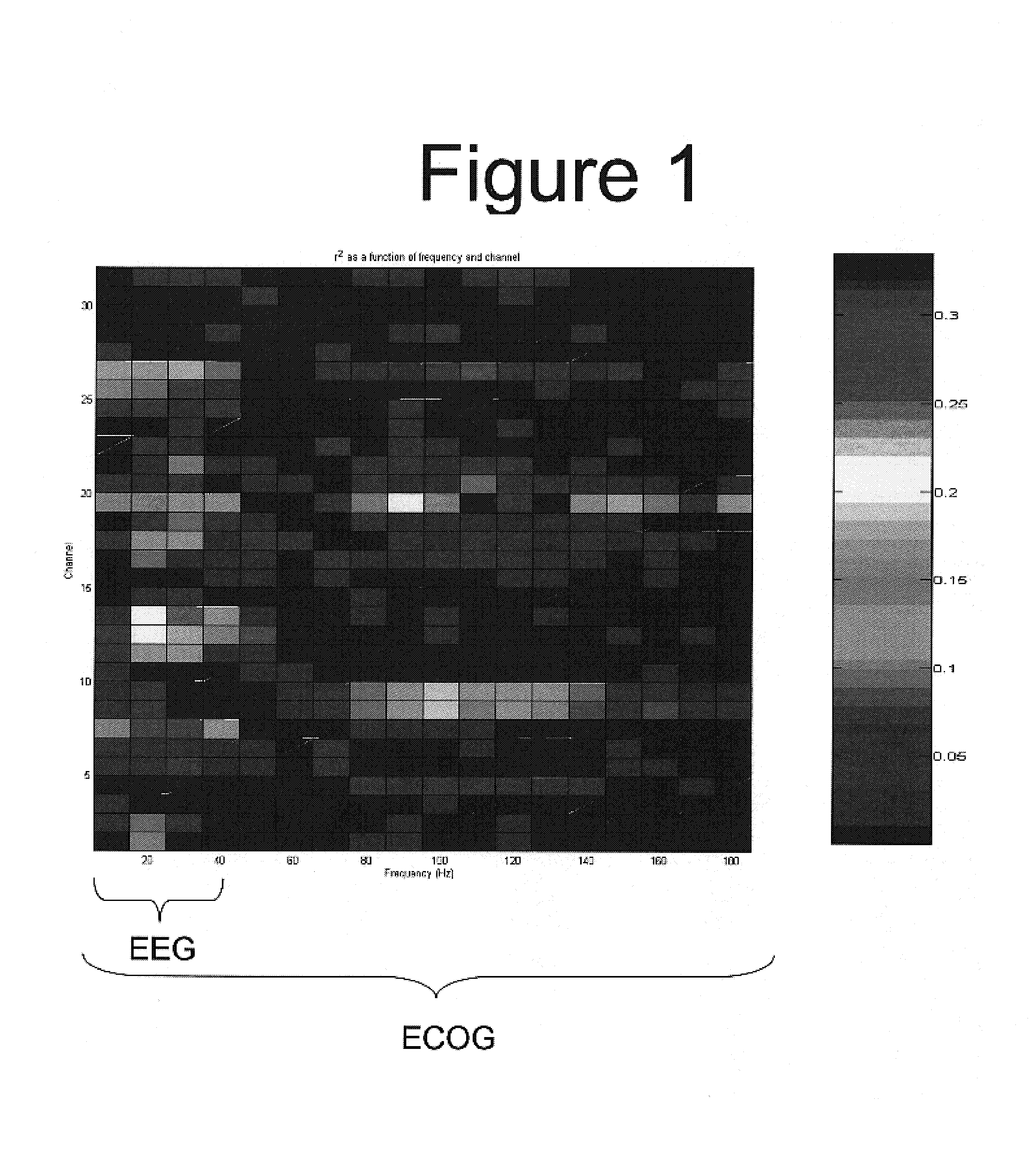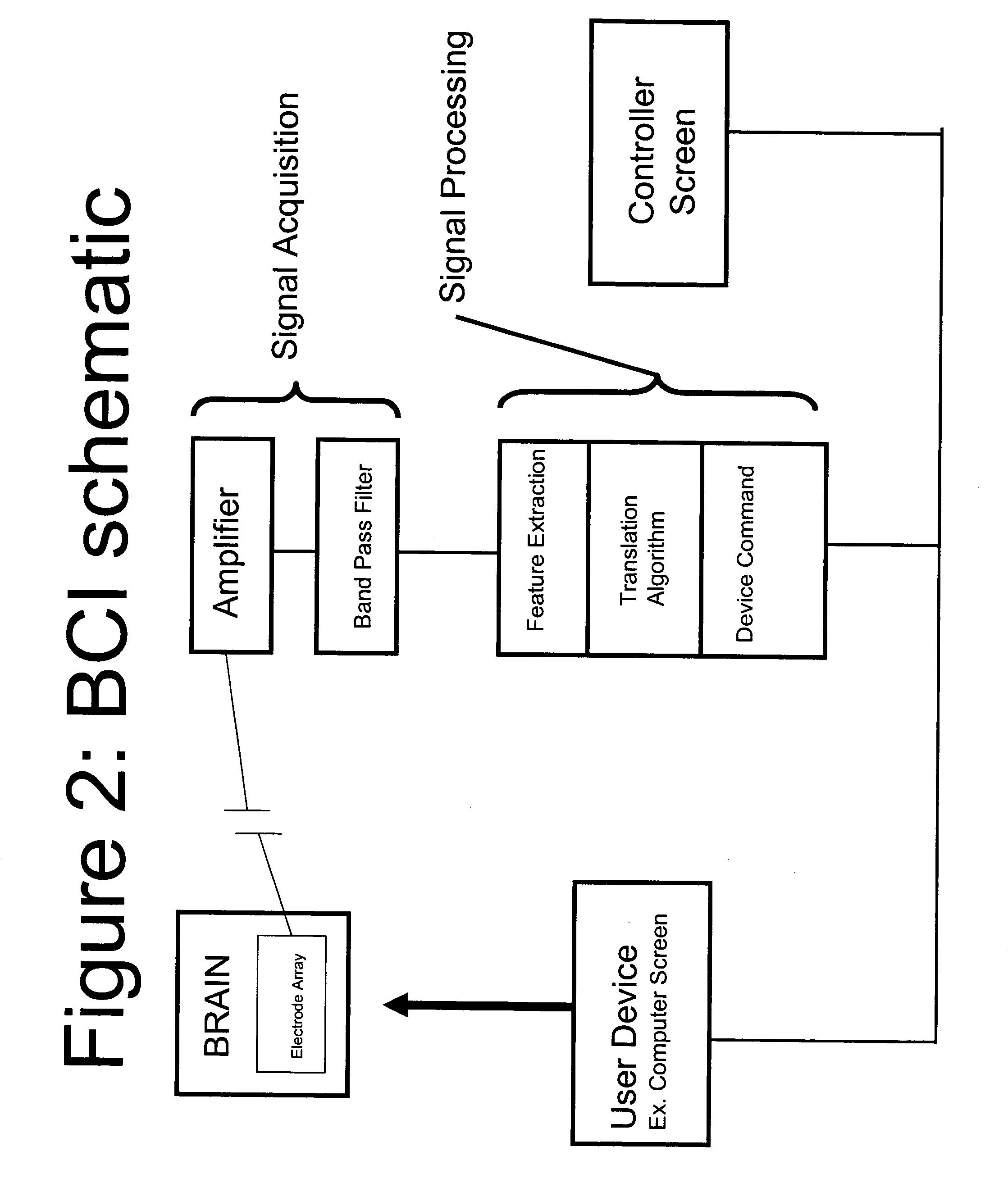Brain computer interface
a brain computer and interface technology, applied in the field of bioengineering and computer technology, can solve the problems of low spatial resolution and poor signal to noise ratio, and is not generally suitable for human applications, and the known bci system remains limited by the constraints of spatial resolution and signal strength
- Summary
- Abstract
- Description
- Claims
- Application Information
AI Technical Summary
Benefits of technology
Problems solved by technology
Method used
Image
Examples
example 1
Initial Screening Tasks
[0068]An advantage of closed-loop, real-time control is that biofeedback can be used by the brain to adapt the cortical control signal. In order to test ECoG signals in a real-time BCI environment as well as to explore cortical plasticity in a closed-loop ECoG BCI system, subdural electrode grids were utilized in four subjects with intractable epilepsy who underwent temporary array placement to localize seizure foci prior to surgery. The subjects performed a series of motor and cognitive tasks while 32 ECoG channels were digitized and processed with BCI2000 software as described in Schalk et al., IEEE Trans Biomed Eng. 10, 1–10 (2003). All subjects were successful at achieving control of the cursor to hit the correct site for a significant percentage of the trials. Likewise, all four subjects showed significant cortical signal adaptation which resulted in an improved cortical control over a period of minutes.
[0069]The subjects in this study were patients in th...
example 2
Real Time Closed-Loop Control Using ECoG
[0077]All four subjects were able to successfully control the cursor towards a high percentage of the correct target (80–100%) using their ECoG signal in real time and with continuous visual feedback. (Appendix, Table 2). The range of the percentage of optimal correct choices was between 80% and 100% using the various trained tasks. These tasks included motor tasks (i.e. open and closing the right hand, protruding the tongue, and saying the word move) and imagined tasks (i.e. imagining open and closing the hand, imagined tongue protrusion, and imagining saying the word “move”). All subjects were able to achieve control within minutes following their initial sixty-five (65) minute training session.
[0078]The ECoG frequency bands utilized to achieve control were different for different subjects. They encompassed a broad range of alpha, beta, and high and low gamma frequencies. In general, the controlling frequencies showed power suppression in th...
PUM
 Login to View More
Login to View More Abstract
Description
Claims
Application Information
 Login to View More
Login to View More - R&D
- Intellectual Property
- Life Sciences
- Materials
- Tech Scout
- Unparalleled Data Quality
- Higher Quality Content
- 60% Fewer Hallucinations
Browse by: Latest US Patents, China's latest patents, Technical Efficacy Thesaurus, Application Domain, Technology Topic, Popular Technical Reports.
© 2025 PatSnap. All rights reserved.Legal|Privacy policy|Modern Slavery Act Transparency Statement|Sitemap|About US| Contact US: help@patsnap.com



